From a paper-intensive process to digital mold manufacturing
Interviewee: Andreas Schwab , Chief technology officer
The mold spectrum of BOSCH Formenbau GmbH in Mühlhausen includes the production of precision injection and die casting molds weighing 0.5 to 15 tons. Molds for injection-molded parts are produced by 1K and 2K methods for the safety, electrical equipment and automotive industries. As a supplier of die casting molds for aluminum and zinc, Bosch Formenbau is a highly valued partner of OEMs and their suppliers. Digital mold manufacturing was implemented using Tebis – on the one hand, to meet customer requirements for shorter and shorter processing times, and on the other to offer customers the widest possible window of change for data optimization. With the new Tebis Measure module for measuring electrodes, the last interface is now complete.
Company
BOSCH Formenbau GmbH
Location
Mühlhausen, Germany
Focus
End-to-end manufacturing process based on 3D data set
Benefits:
- Integral CAD/CAM system
- Fast design, manufacture, management and measurement of electrodes
- Paperless information in the shop
Sector
Mold manufacturing
Published
2005
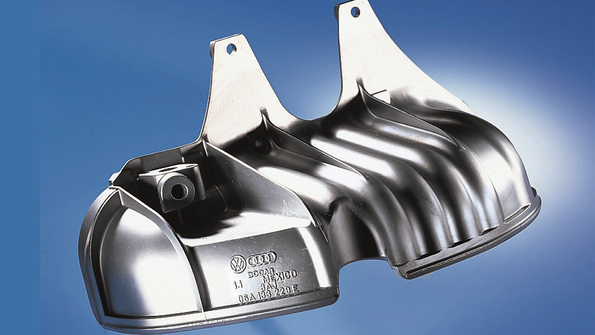
We are currently achieving a savings of at least 25% per electrode in electrode design, which is certainly a significant potential with our production of more than 5,500 electrodes per year.
Bosch Formenbau GmbH in Mühlhausen has relied on CAD/CAM products from Tebis for over 12 years. When they first began, the mold was still designed on the drafting table or in a 2D CAD system. The CAD department then used Tebis to redesign the mold as a 3D data set just to calculate the milling programs. At that time, 3D design was only a means to the end of generating the milling programs. As CAD/CAM systems very quickly became more powerful, Bosch switched over to 3D design at an early stage. The entire manufacturing process has been structured based on a complete 3D design of the mold for over five years. And the mainstay of the operation is the Tebis Viewer technology. It gives all personnel full-time access to the current data, and it is used all the way from acquisition through NC machining to assembly. The 3D data set for die design always remains the central medium of information.
Tebis Viewer as the information terminal in NC machining, HSC electrode manufacturing and wire and sinker EDM up to final assembly
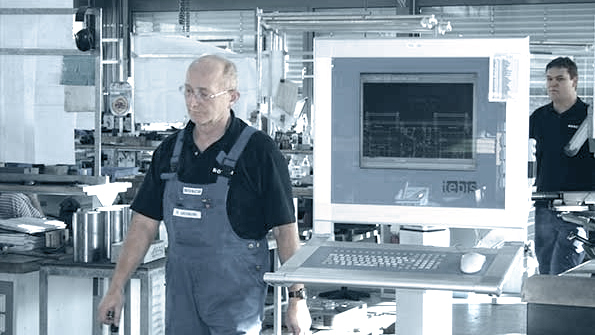
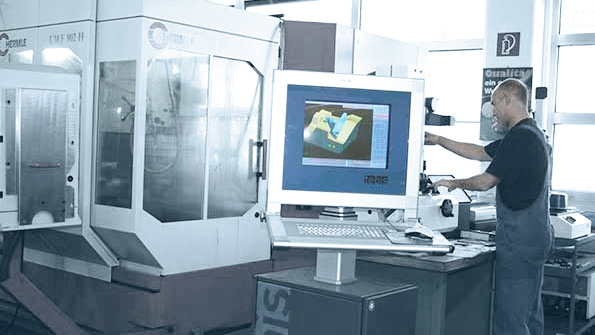
From the order to design
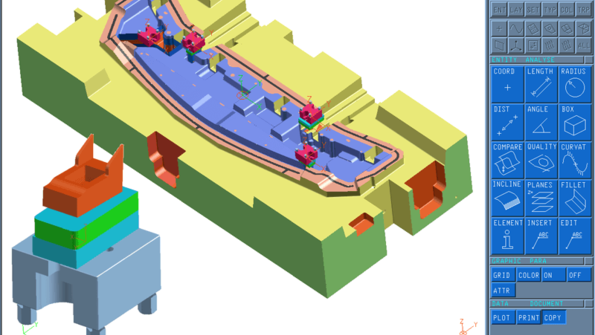
With the many interfaces offered by the Tebis Viewer, the data set provided by the customer can be accessed as early as the quotation process. The extensive cutting and analysis functions enable Sales to prepare a reliable quotation in the shortest possible time. The mold is then completely designed in UG or CATIA. A virtual image of the actual complete die is then generated, with all sliders, inserts, standard parts, etc.
However, if more complex 3G surfaces need to be generated for mold release, the Bosch designers quickly look to the surface functions in Tebis, especially because they know that the result can be used for solid operations in UG or CATIA at any time. After the die design has been completed, the data set is converted to Tebis format using the built-in Tebis interfaces. Any slight changes subsequently incorporated in the project are implemented exclusively in the Tebis data set.
From die to electrode
A first step in manufacturing preparation is the Tebis Feature Scanner. This completely automatically recognizes all of the suitable geometry for drilling. The relevant parameters for manufacturing, such as diameter, depth and thread or toleranced fit type, are stored in a feature. The subsequent NC manufacturing process can access these data again and use them to automatically generate the necessary NC programs. Die manufacturing is then begun. Milling programs for the steel parts are calculated and electrodes are designed, managed and NC programmed on a total of six Tebis CAD/CAM workstations. The current Tebis Electrode module was implemented in the company’s electrode design in 2005. It can be used to quickly extract, modify and augment burn surfaces. The system then automatically suggests an appropriate blank and offers the available electrode holders from a library. The key to this software is the integrated electrode management, which provides all of the information on an electrode, including the designation, position, type, arc gap, material and operator. "We have currently achieved a savings of at least 25% per electrode in electrode design, which is certainly a significant potential with our production of more than 5,500 electrodes per year," says Andreas Schwab, technical manager at Bosch.
Outstanding quality assurance
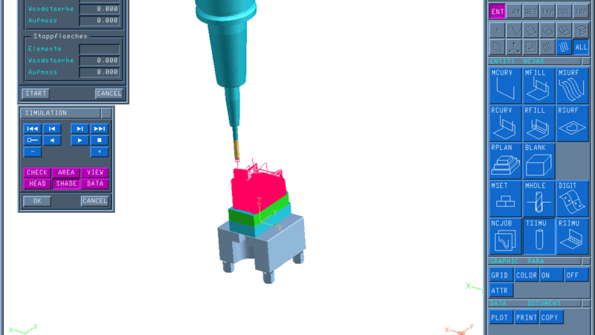
Bosch is now taking a further optimization step: acquiring a new Tebis module for measuring electrodes. This addition to the existing Tebis software for coordinate measurement provides access to the newly procured Zeiss Accura 7 measuring machine directly from the Tebis data set. This measures the burn surfaces on the electrode at the specified points and uses this information to determine the required offset values and the actual arc gap for eroding. These values are entered in electrode management and can thus be transferred all the way to the EDM machine with the 3D data set. "Because we were already a development partner for the electrode design module," explains Schwab, "the combination of our mold manufacturing expertise with the abilities of the Tebis software engineers enabled the creation of an effective solution." The Tebis product enables very simple measurements against the 3D data set. "The electrode management module already knows the arc gap, the zero point and electrode alignment, so I don't have to worry about them," says Schwab. Here as well, the apparent expenditure is justified by production volume. Switching to an external measuring system would have resulted in a very high interface expenditure for products with an average of 100 electrodes. And this savings is compounded even more by the regular changes flowing into a mold until shortly before completion.
NC program
But of course an electrode first has to be milled before there's anything to be measured. And, as initially mentioned, 3D milling was the starting point for the Tebis installation at Bosch. However, they are relying more and more on NC programming in the CAM system for 2.5D drilling and milling as well. Because this in turn means that the machine operators don't have to program as much on the NC control, a new working model was developed in which three employees form a team. The tasks are then rotated within this team: each team member works on the machine and in NC programming for specified intervals. The result is that the different work experience is complementary and so the employees can be deployed more flexibly," explains Schwab, "which was also a request that personnel had presented to us."
Viewer systems as a connecting element
NC manufacturing is one of the main areas of application of the Tebis Viewer systems. This is where the employees obtain all required information on the current manufacturing order. This very quickly provides manufacturing with a 3D overview of the geometry. "In addition to NC manufacturing, we also use our total of 12 Viewer stations in wire EDM, sinker EDM, electrode manufacturing, turning and final assembly," emphasizes Schwab. This clearly shows the significance that this technology has come to have for Bosch. More than 40 of the 75 employees have been trained to use the Viewer. Because operation of the CAD/CAM system and the Viewer are very similar, NC programmers can also help out if employees encounter problems because they don’t work with Tebis on a daily basis. Both software packages use the same data format, so no more data conversion interfaces are required.
Complex 1 and 2K geometries for the electrical equipment industry as well as die casting molds for the automotive industry – Bosch's core areas
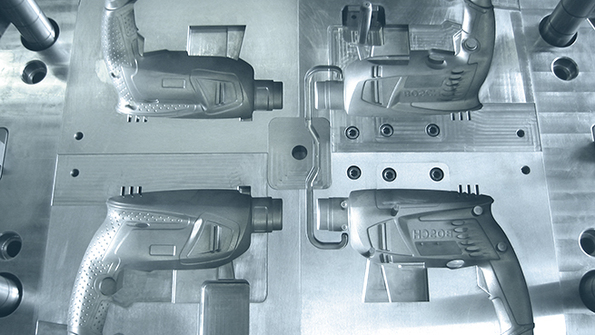

Harmonizing the real and virtual worlds
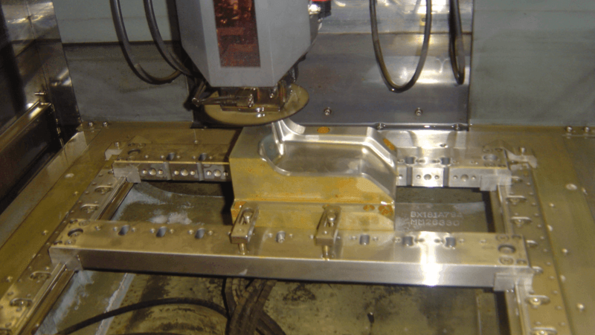
All Tebis software products at Bosch Formenbau are managed by a central license server. This enables exactly the package needed to be run at any workstation at any time. This allows continuous comparisons with the virtual data models and enables Bosch employees to produce the best possible dies.


